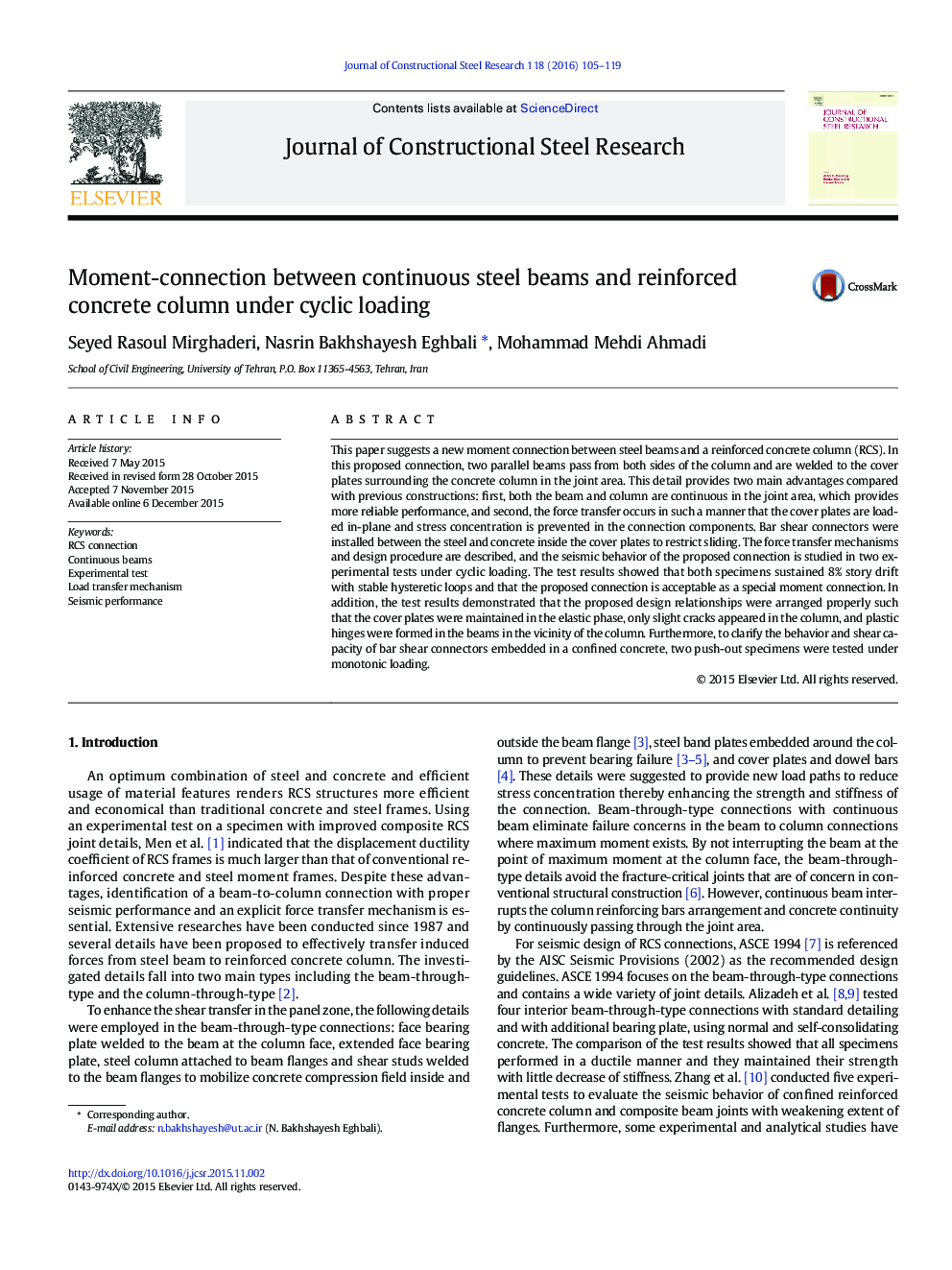| Article ID | Journal | Published Year | Pages | File Type |
|---|---|---|---|---|
| 284311 | Journal of Constructional Steel Research | 2016 | 15 Pages |
•A new moment connection between steel beams and a reinforced concrete column (RCS) is proposed.•Two interior RCS connections are tested under cyclic loading up to 8% story drift angle.•The shear capacity of a bar shear connector embedded in a confined concrete block is investigated experimentally.•The force transfer mechanisms and design procedure are described.•The specimens showed stable hysteric behavior with very good energy dissipation capacity.
This paper suggests a new moment connection between steel beams and a reinforced concrete column (RCS). In this proposed connection, two parallel beams pass from both sides of the column and are welded to the cover plates surrounding the concrete column in the joint area. This detail provides two main advantages compared with previous constructions: first, both the beam and column are continuous in the joint area, which provides more reliable performance, and second, the force transfer occurs in such a manner that the cover plates are loaded in-plane and stress concentration is prevented in the connection components. Bar shear connectors were installed between the steel and concrete inside the cover plates to restrict sliding. The force transfer mechanisms and design procedure are described, and the seismic behavior of the proposed connection is studied in two experimental tests under cyclic loading. The test results showed that both specimens sustained 8% story drift with stable hysteretic loops and that the proposed connection is acceptable as a special moment connection. In addition, the test results demonstrated that the proposed design relationships were arranged properly such that the cover plates were maintained in the elastic phase, only slight cracks appeared in the column, and plastic hinges were formed in the beams in the vicinity of the column. Furthermore, to clarify the behavior and shear capacity of bar shear connectors embedded in a confined concrete, two push-out specimens were tested under monotonic loading.
